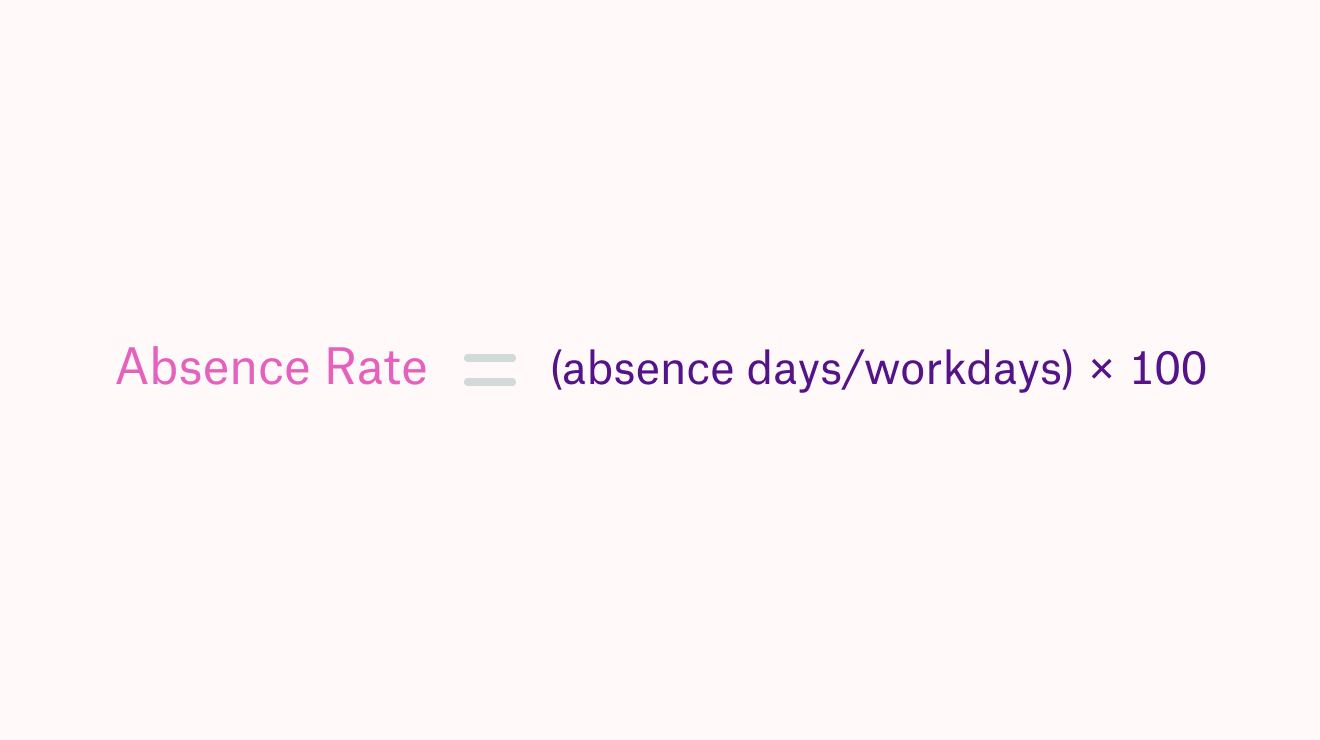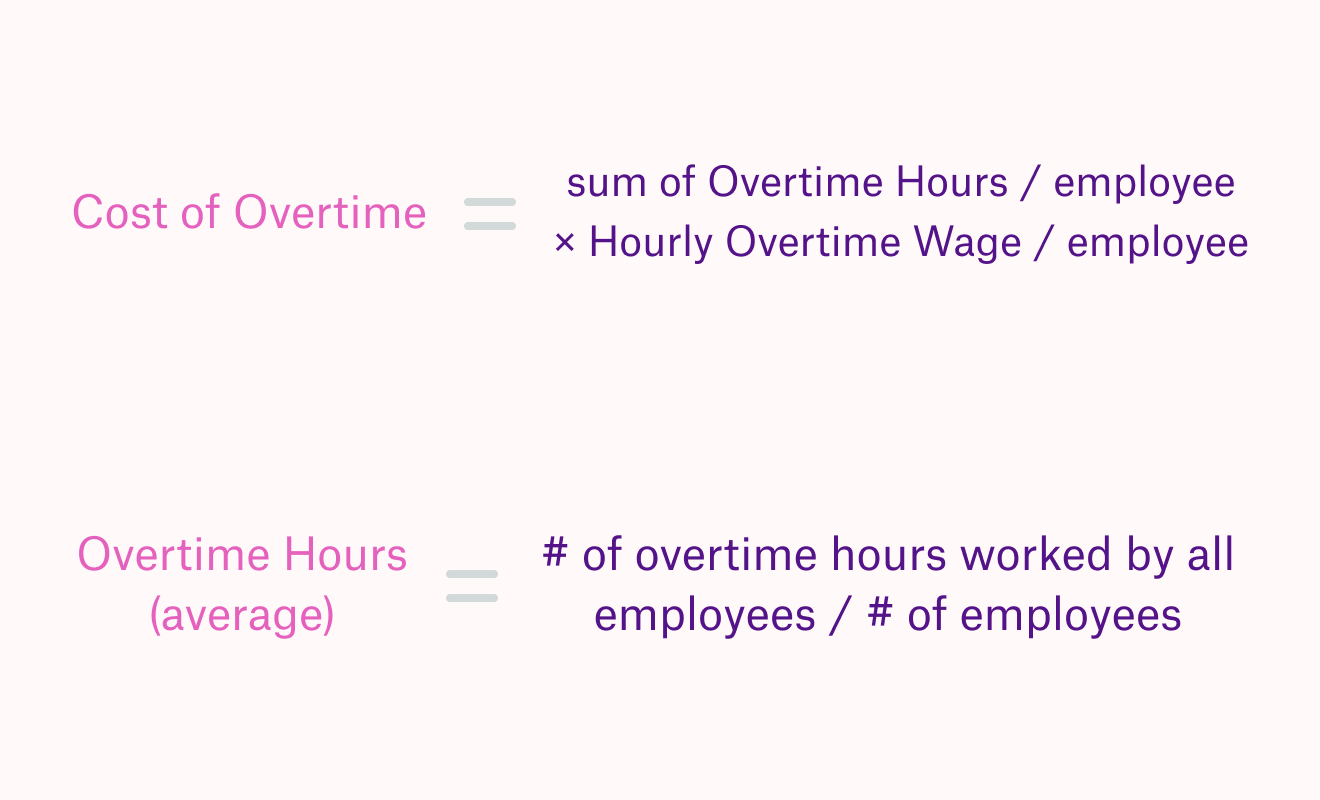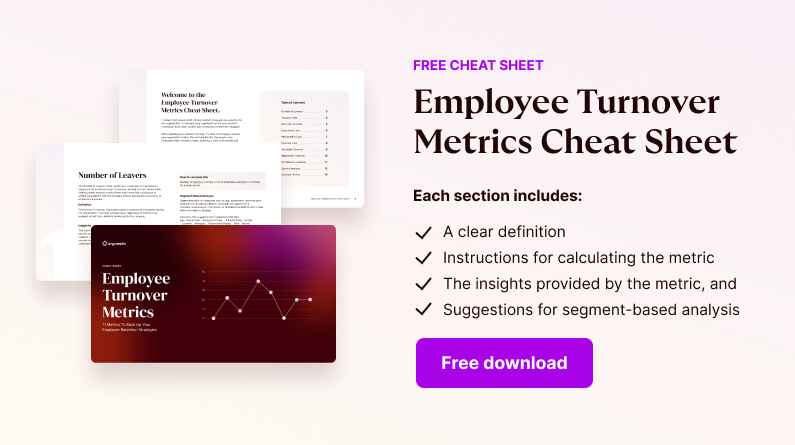What unplanned leaves can teach you about engagement, burnout, and more.
Even when employees are away, business needs to continue. With fewer people available, someone needs to take on the leftover work. For temporary, planned leaves, you can redistribute work to lessen the load — and the costs. But employees’ unplanned absences can have spillover effects that create more stress for colleagues who have to pick up the slack.
Of course, sometimes employees need to take unplanned time off. We don’t want to get rid of that, but we still need to manage this new workload in the best way.
How do I compare the costs and impact of planned and unplanned absences?
To find the impact of planned and unplanned absences, we need to calculate a few things from your HR information system and any time-tracking systems your company uses:
- Your absence rate
- Share of unplanned leaves
- The cost of unplanned leaves
- Cost of overtime
To start, your Absence Rate shows you the total days of employee absence as a percentage of the total workdays in a given time (for example, one year). You can analyze absence rates for trends across planned and unplanned absences. For deeper analyses of employees’ situation while they’re taking these leaves, you can connect employee engagement metrics (like our Employee Wellbeing survey).
Here’s how to calculate your absence rate:

Not all absences are equal, as we already know. Unplanned Leaves represent the share of unplanned leaves out of all an employee’s absences. This gives us a better picture of how much absence time resulted in an unexpected loss in productivity. If we see a lot of unplanned leaves in a short time, these frequent unscheduled absences can reflect a lack of engagement — also called absenteeism.

*Note: Unplanned Leaves = calling in sick, needing personal time off, caregiving, personal emergencies, and others
So, what do unplanned leaves directly cost your organization?
Cost of Unplanned Leaves is a metric that calculates the direct costs for each leave of this type. This metric gives us insight into the direct costs for unplanned leaves, but we shouldn’t forget the indirect costs. Expenses like administrative handling, replacement training, and the stress of a higher workload on other team members can be onerous and far-reaching.

Finally, how do we calculate one of the major indirect costs of unplanned leaves?
We can track the Cost of Overtime, one metric that goes up when employees take unplanned leaves. To prevent burnout and improve efficiency, you should track the cost of overtime and set a (low) threshold for when to hire new workers. Reallocating employees who have extra capacity or hiring new ones can keep departments efficient and productive without putting an unnecessary burden on current employees.
Overtime Hours show us added time worked by employees who are taking over for an unplanned absence. The average number reflects how often work goes beyond employees’ expected hours, while a breakdown by each employee is an early risk factor for burnout.

*Note: Hourly overtime wages are different in each country and potentially within countries: in some areas, overtime hours are paid at 1.5x the rate of standard hours.


So What?
Some employee absences are necessary, even those that come up last minute. But we can manage the indirect impact of unplanned employee absences by tracking and acting on the leading indicators of burnout. Fortunately, the metrics above can help you make the best decisions for your employees’ wellbeing and productivity in a pinch. Make tracking them easy using Orgnostic’s people analytics platform.
And remember: being present at work is not the ultimate goal. Presenteeism, the close sibling to absenteeism, brings a whole host of other costs too. Both can be a reflection of low engagement and commitment to the company, which you can measure using our surveys. Sometimes employees’ low engagement, commitment, and motivation can turn into low performance, which can affect team members indirectly. See how you can approach performance issues in our article here.